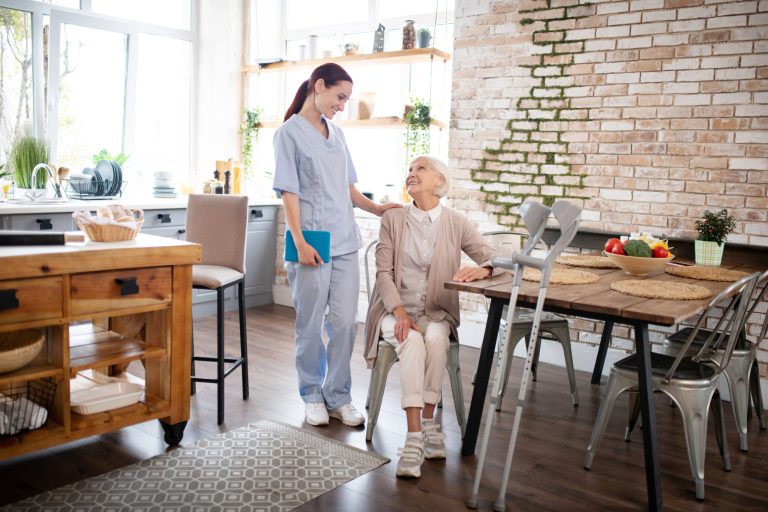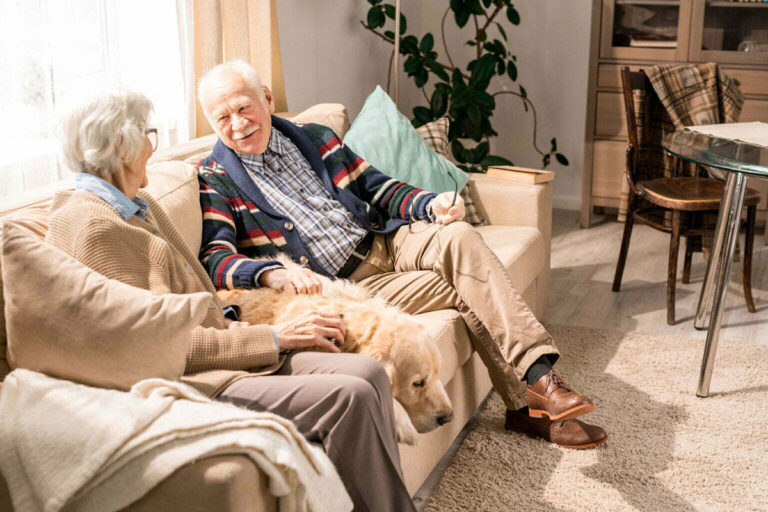Senior Friendly Home Fall Prevention Exercises
As we age, our bodies go through many changes, for that reason maintaining balance and preventing falls can become a daily concern. Senior falls are more common than you might think, and their consequences can be severe. The statistics are alarming, with millions of seniors experiencing falls each year, often resulting in fractures, hospitalizations, and a decline in overall well-being.
But the good news is that fall prevention is within reach, and it starts with simple exercises that can be done in the comfort of your own home. In this blog you will get some ideas to enhance balance strength, and flexibility, helping to reduce the risk of falls and improve your overall well-being.
Before initiating any exercise program, it’s also important to consult with a healthcare professional, such as your family doctor or a physical therapist. They can assess your individual health conditions, provide personalized recommendations, and ensure that your chosen exercises are safe and appropriate for your unique needs.
With that said, you will find 3 categories to explore, balance, strength, and flexibility. Choose the ones you like the most and start creating your routine.
Balance Exercises
Standing on One Foot
Step 1: Stand near a sturdy surface for support (e.g., a chair or countertop).
Step 2: Lift one foot off the ground, bending at the knee.
Step 3: Hold the position for 10-30 seconds.
Step 4: Repeat on the other leg.
Step 5: Perform this exercise 5-10 times on each leg.
Heel-to-Toe Walk
Step 1: Take a step forward, placing your heel directly in front of your opposite foot’s toes.
Step 2: Continue to walk in this heel-to-toe fashion for about 10-20 steps.
Step 3: This exercise can be particularly beneficial for improving balance and gait.
Strength Exercises
Chair Squats
Step 1: Stand in front of a sturdy, armless chair with your feet hip-width apart.
Step 2: Lower your body by bending at the hips and knees while keeping your chest up.
Step 3: Gently tap your buttocks to the chair’s surface.
Step 4: Push through your heels to stand back up.
Step 5: Perform 2-3 sets of 10-15 repetitions.
Leg raises
Step 1: Stand behind a chair, holding onto the backrest for support.
Step 2: Lift one leg straight back without bending the knee.
Step 3: Lower it back down and repeat on the other leg.
Step 4: Do 2-3 sets of 10-15 leg raises on each leg.
Flexibility Exercises
Neck Stretch
Step 1: Sit or stand comfortably with your shoulders relaxed.
Step 2: Slowly tilt your head to one side, bringing your ear toward your shoulder.
Step 3: Hold the stretch for 15-30 seconds.
Step 4: Repeat on the other side.
Shoulder and Upper Back Stretch
Step 1: Clasp your hands together in front of you.
Step 2: Extend your arms while gently rounding your upper back.
Step 3: Hold for 15-30 seconds.
Step 4: Release and repeat.
Leg Stretch
Step 1: Sit with your legs extended in front of you.
Step 2: Gently reach for your toes, keeping your back straight.
Step 3: Hold the stretch for 15-30 seconds.
Step 4: Repeat a few times.
If you’re just starting, perform exercises near a sturdy support, as you gain confidence and strength, challenge yourself by decreasing your reliance on support. By incorporating these exercises into your daily routine, you can work toward improved balance, strength, and flexibility, reducing your risk of falls and enhancing your overall quality of life.
Gradually progress as you become more comfortable and confident in your abilities. The key is consistency, so make these exercises a regular part of your daily life to enjoy the full benefits they offer.

Creating a Routine
Establishing a structured routine for fall prevention exercises is essential to ensure consistent progress and maintain the long-term benefits of these exercises. Here’s how to create a practical and effective exercise routine:
Define your goals for fall prevention and overall health. Be specific about what you want to achieve, such as improving balance, increasing muscle strength, or enhancing flexibility.
Select a time of day that works best for you. Some people prefer morning routines to kickstart their day, while others find it more convenient to exercise in the afternoon or evening.
Aim for at least three to four exercise sessions per week to see noticeable improvements. Consistency is key, so find a schedule that suits your lifestyle.
Prior to each exercise session, include a warm-up routine to prepare your muscles and joints. This can consist of light cardiovascular activities such as marching in place or arm circles. Similarly, include a cool-down period that includes gentle stretching to help prevent muscle soreness.
Incorporate a variety of balance, strength, and flexibility exercises into your routine. This diversity ensures that you target different muscle groups and maintain your interest.
Keep a journal or use a fitness app to monitor your progress. Record the number of repetitions, the duration of exercises, and any noticeable improvements in balance and strength.
Your exercise routine should be adaptable to any physical limitations or changes in your health. If you experience any discomfort or pain, consult with your healthcare professional to make necessary adjustments.
Recognize and celebrate your progress, no matter how small. Achieving your goals, even in incremental steps, is a cause for celebration and motivation. Find a source of motivation that keeps you dedicated to your exercise routine. Whether it’s a supportive friend or family member, a fitness buddy, or tracking your improvements, motivation is essential to maintain consistency.
Creating a routine for your fall prevention exercises not only enhances their effectiveness but also helps integrate them into your daily life seamlessly. By following these guidelines and staying committed to your routine, you can significantly reduce the risk of falls and enjoy the benefits of improved balance, strength, and flexibility as you age.

In addition to incorporating fall prevention exercises into your routine, there are several additional measures you can take to further reduce the risk of falls and enhance your safety at home.
These practical tips complement your exercise efforts and create a comprehensive fall prevention strategy:
Periodically assess your home for potential hazards. Look for loose rugs, slippery floors, and clutter. Address any issues that could lead to trips or falls.
Ensure that your home is well-lit, especially in hallways, staircases, and areas prone to darkness. Use nightlights to illuminate your path during nighttime.
Secure or remove loose cords and wires that may lead to trips. Keep walkways clear of clutter, and avoid placing items on stairs or pathways.
Install handrails and grab bars in areas like bathrooms and staircases to provide additional support for balance and stability.
Wear sturdy, non-slip shoes or slippers with good support both indoors and outdoors. Avoid walking in socks or shoes with worn-out soles.
Keep a record of your medications and their side effects. Some medications can affect balance or cause dizziness, so discuss any concerns with your healthcare provider.
Regularly schedule eye and hearing examinations to maintain optimal sensory awareness, as poor vision or hearing can contribute to falls.
Maintain a balanced diet and stay hydrated to keep your body functioning at its best. Dehydration can lead to dizziness and loss of balance.
If necessary, use mobility aids such as canes or walkers, as recommended by your healthcare professional. These devices can provide valuable support and stability.
Take your time and move at a comfortable pace. Rushing increases the likelihood of accidents. For example, when getting up from a seated position, do so gradually.
Keep up with regular checkups and screenings with your healthcare provider. They can identify and address any health issues that may impact your balance and mobility.
Staying socially and mentally active can help improve overall well-being. Participate in hobbies and activities that you enjoy, which can also boost confidence and coordination.
Install non-slip mats in the bathroom, use a shower chair, and consider a raised toilet seat to enhance bathroom safety.
Ensure you have a plan in place for emergencies, including access to a phone or medical alert system to call for assistance if needed.
By incorporating these exercises into daily routines and making necessary modifications to the home, you can significantly reduce the risk of falls and their associated injuries.
It’s important to remember that prevention is always better than a cure, and with these exercises, we empower seniors to enjoy an active, independent, and fulfilling life for years to come.
So, let’s commit to creating senior-friendly spaces and encouraging our elders to stay active and healthy, making their homes not just houses but sanctuaries of safety and well-being.
Get Covered Today
- 24/7 Alert Monitoring
- Built In Fall Detection
- GPS Locator Technology
- Two-way Voice Communication








